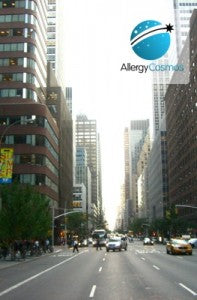One of the enduring images of the World Trade Center terror attacks is of survivors fleeing amidst dense and choking clouds of dust and debris issuing from the Towers. What toll might such massive exposure to dust pollution have on the long-term health of your lungs, and other body organs? What is the cost of air pollution? Ten years on, we have some answers, thanks to two studies from researchers at Mount Sinai Medical School and elsewhere in the United States, which have just been published in The Lancet. The new research agrees with earlier studies, finding that rescue and recovery workers involved in the 9/11 disaster have a high risk of developing a range of physical and mental problems, including asthma and impaired lung function.
Around 50,000 people worked in rescue and recovery both in the immediate aftermath and in the weeks and months following 9/11. These included firefighters, police officers, construction and municipal workers. For most, I would imagine this act of public duty involved exposure to several lifetimes of airborne and particulate pollution. Damaging components of the 9/11 pollution would include burning jet fuel from the hijacked aircraft (rich in polyaromatic hydrocarbons, glass and asbestos fibres, lead, dioxins and cement dust).
More than 27,000 rescue and recovery workers were recruited to the study, starting in mid-2002. Some of the group have now been followed up for nine years. At the start of the study, 10.5% had developed asthma symptoms and the number of cases increased steadily, year on year, so that by year 9 around one third (of those who had been in the study for that length of time) is suffering with asthma. Among the general population, around 8-10% suffers with asthma. Similarly, the prevalence of sinusitis increased from 10.7% to 42% at year 9. Impaired lung function was seen in 42% of the group at year 9.
A further study looked at mortality among survivors of 9/11. Among 13,337 rescue and recovery workers, there were 156 deaths, and among non-rescue and non-recovery participants (those who were just caught up in the disaster, like local residents and WTC office workers) there were 634 deaths. Overall, the death rate in those exposed to air pollution from the 9/11 terror attacks was not increased. However, in non-rescue and non-recovery workers, there was an increased risk of death from heart disease with higher levels of pollution exposure, compared to those exposed to lower levels of pollution. This increased risk was not found in the rescue and recovery workers.
There has been concern that exposure to the levels of carcinogen in the 9/11 pollution cloud could increase the risk of cancer and contribute to the cost of air pollution. It is likely too soon to say if this risk will be borne out - for the time lag between exposure to a carcinogen and the development of cancer is often more than ten years. But there is already some evidence of increased cancer risk, particularly of thyroid cancer, melanoma, and lymphoma, among firefighters involved at the WTC site.
This example, although an extreme one, underlines the importance of occupational exposures to pollution in asthma and lung disease. Firefighters recalling 9/11 have noted that they were not given protection other than paper masks and overalls, and went home each day still wearing contaminated clothing. It's to be hoped that brave individuals involved in disaster work are always at least given proper protection against the immediate, and long-term, health risks of air pollution exposure. That's one of many lessons that can be learned as we reflect, ten years later, on the 9/11 terror attacks.
http://www.thelancet.com/journals/lancet/article/PIIS0140-6736(11)61180-X/fulltext




